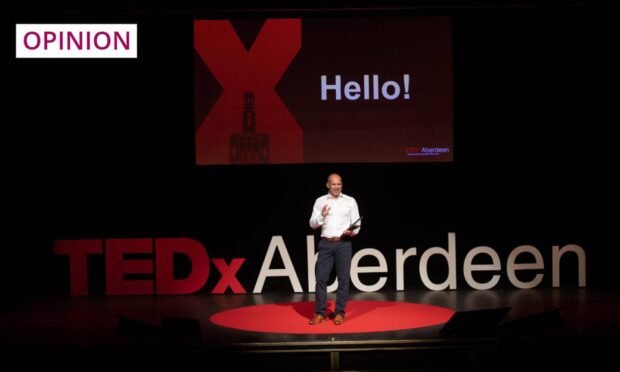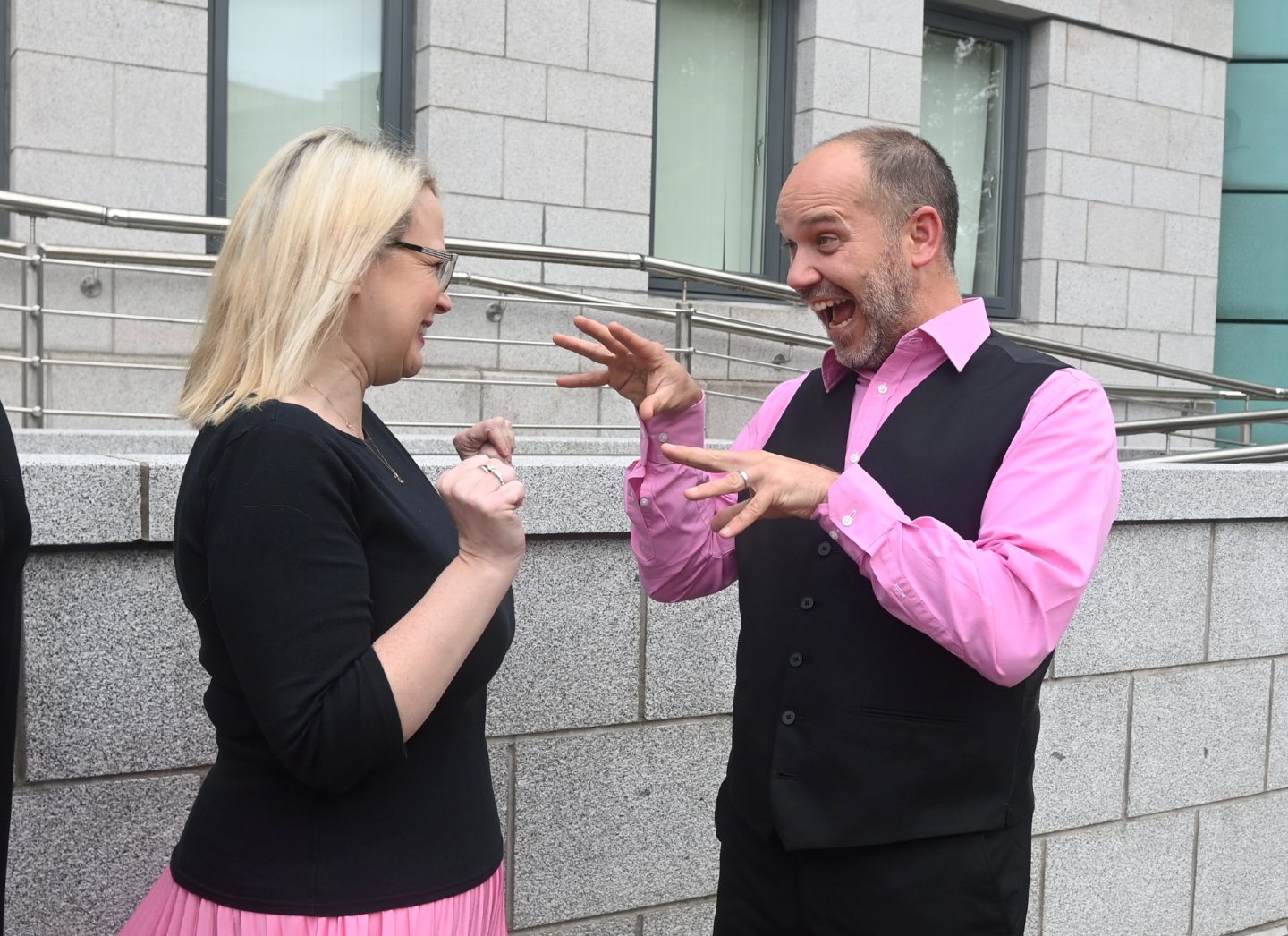The north-east of Scotland has a rich history of storytelling, including the bothy ballads, Toulmin, Lewis Grassic Gibbon, the Scottish travelling people, and even (or especially, in my humble opinion) Scotland the What?
Stories help us tap into our “wye o’ spikkin’”, our way of life, and the villages, towns and countrysides we inhabit. Stories are designed to make you feel something – whether that’s building empathy, anticipation, or finding the laughter.
Being a generally humble and self-effacing folk, I think that we in the north-east get too hung up on the execution part of storytelling, rather than embracing it to provide context, perspective and insight.
I have been on the sharp end of things when it doesn’t go to plan. I was asked to speak at the WAGS Dinner a few years ago – basically a posh meal rather than stand-up comedy. I had a story to tell and so I thought I’d do it (even though some of my fellow Flying Pigs had done it and warned me not to). My ego wouldn’t listen.
I constructed a great story, involving triumph over adversity, hard work over chance, and a 30-year-long hatred of a chap called Simon Horner in the TV programme Young Krypton. I told my tale passionately and, I thought, with humour.
The audience thought otherwise.
It was crushing, embarrassing, and – I won’t lie – it took me weeks to recover. It was the last WAGS Dinner to be hosted in the city. Ouch.
Despite all of that, telling my story was cathartic.
We all have a story in us
We all have a story in us. Maybe not a book (as is often quoted), but life deals us hands, good and bad, and it is how we use those hands that can define how we see ourselves, what we tell ourselves, and how we treat others.
My family and I went to Edinburgh for a short break over the Easter holidays, and we were lucky enough to see the touring production of the musical Hamilton. I had watched the original Broadway version on Disney+ before with my daughter, and we are both musical theatre fanatics, so we were very excited. My wife and son, less so.
We all like a musical, but this one was not an easy sell – why should they care about an immigrant who became a founding father of the United States? The first half is packed with action, but it has a second half which explores loss, betrayal and the creation of a global financial system – all through the media of song, rap, and dance. It’s not exactly The Sound of Music.
Lin-Manuel Miranda – the creator of the show, which is now widely regarded as an international phenomenon – tells Alexander Hamilton’s story in a way that connects. He gives a warts-and-all perspective on the eponymous anti-hero. He makes the universal personal; the complicated simple. He makes a show about a master communicator speak to, and for, all.
It’s hard to tell someone else’s story. It should be much easier to tell our own.
Words are tools for making connections
Around this time of year, I interview applicants for our graduate positions at EY. I prefer to carry out the final interview so I can try to get to know the applicant and, most importantly, understand their mindset.
Up until that final stage, they will have participated in various intellectual and psychometric assessments. So, by the time they get to interview, we’ll know they can do the job. My task in those 60 minutes is to get to know the person.
I’m given a set script and questions that must be asked, but the real insight comes when a candidate tells me more about themselves. It’s usually framed around a question on leadership skills or handling conflict.
Interviewees probably don’t recognise it at the time, but they are using the power of storytelling during these conversations
However, once they start to tell a story about a real-life incident, that’s when I become interested.
I want to hear about the time they salvaged a situation at their part-time job while everyone else was losing their heads. I want to hear about the time they captained their school football team to a win, despite being 10 players and 3-0 down.
Interviewees probably don’t recognise it at the time, but they are using the power of storytelling during these conversations. They might make me laugh; they might create a feeling of empathy. They are making a connection with me.
Words are tools. Stories have meaning.
Give it a go
As I emerged from the Festival Theatre after Hamilton, I knew I’d be talking about the show for a long time to come. Not simply because it is a great piece of theatre, but because I had just watched a story be told in a brilliant way.
We all have our own story to tell, and you might only realise how brilliant yours is once you start sharing it with somebody else. So, give it a go. Write it down, or say out loud – perhaps to those young folks whose heads are often buried in a smartphone.
We might not have the power of rap or dance to make it a global phenomenon, but I guarantee you’ll make that all-important connection with that all-important person.
And, to Simon Horner – that chap from Yorkshire who bested me all those years ago – I ask: fit’s your story, min?
Moray Barber is managing partner at EY Aberdeen, chair of Castlegate Arts, and a performer and writer with The Flying Pigs


Conversation